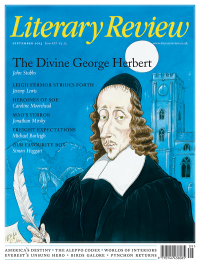Linda Porter
The Queen and the Welshman
Tudor: The Family Story
By Leanda de Lisle
Chatto & Windus 538pp £20
The marriage of Catherine of Valois, the attractive young widow of Henry V, and Owen Tudor, a lowly Welsh squire, is a perennial favourite of historical fiction. Indeed, it lends itself well to the genre precisely because there is no reliable information about how and when the couple met. Romantic stories abound. Regardless of whether the queen first spotted Owen swimming or came into much closer contact when he overbalanced and fell into her lap while dancing, at some point between 1428 and 1432 they were married. Although their union was not officially acknowledged until Catherine’s death in 1437, it was clearly known to – and tolerated by – the advisers of young Henry VI, men who had earlier sought to contain what one contemporary characterised as the queen’s ‘carnal passions’ by bringing in a statute forbidding marriage to a widowed queen without royal consent, on pain of forfeiture of lands for life. However, the target of this restrictive piece of legislation, which aimed to consign the lively French queen to years of celibacy and boredom, was not Owen Tudor but Edmund Beaufort, the younger brother of the Duke of Somerset, with whom Catherine was rumoured to have had an affair. It has even been suggested that the first son of her subsequent marriage to Owen Tudor was actually Edmund Beaufort’s child, and that the marriage to Tudor may have been intended to protect a high-born lover. The truth will never be known and we should probably not read too much into the fact that the child was himself called Edmund, a common enough name at the time. But the uncertainties over the date of the Tudor marriage and young Edmund’s birth certainly add spice to the story of the Tudors, for perhaps they were never Tudors at all.
This dynasty, which ruled England throughout the tumultuous changes of the 16th century, has a hold over the popular imagination unrivalled by any other family in our history. But we should be careful here to remember that we are talking only of England and not of the British Isles as

Sign Up to our newsletter
Receive free articles, highlights from the archive, news, details of prizes, and much more.@Lit_Review
Follow Literary Review on Twitter
Twitter Feed
Alfred, Lord Tennyson is practically a byword for old-fashioned Victorian grandeur, rarely pictured without a cravat and a serious beard.
Seamus Perry tries to picture him as a younger man.
Seamus Perry - Before the Beard
Seamus Perry: Before the Beard - The Boundless Deep: Young Tennyson, Science, and the Crisis of Belief by Richard Holmes
literaryreview.co.uk
Novelist Muriel Spark had a tongue that could produce both sugar and poison. It’s no surprise, then, that her letters make for a brilliant read.
@claire_harman considers some of the most entertaining.
Claire Harman - Fighting Words
Claire Harman: Fighting Words - The Letters of Muriel Spark, Volume 1: 1944-1963 by Dan Gunn
literaryreview.co.uk
Of all the articles I’ve published in recent years, this is *by far* my favourite.
✍️ On childhood, memory, and the sea - for @Lit_Review :
https://literaryreview.co.uk/flotsam-and-jetsam